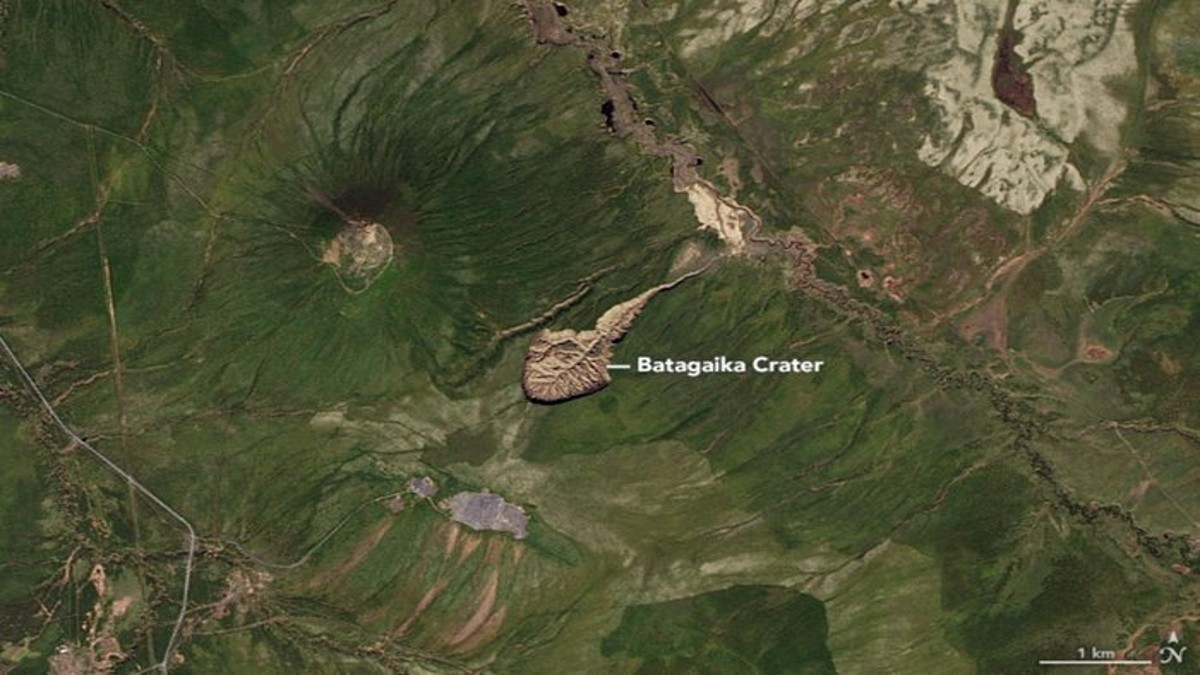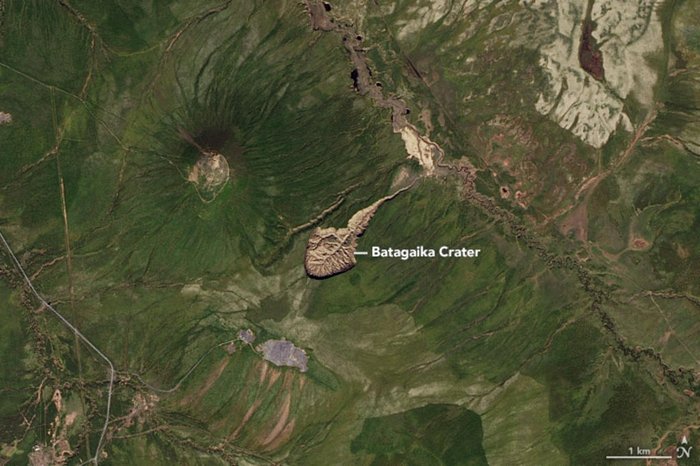
Siberia’s gate to hell
Siberia’s gate to hell, In the remote expanses of Siberia, a chilling spectacle is unfolding as the “Gate of Hell” crater continues its ominous expansion. This enigmatic phenomenon, born from the melting ice of the Russian Arctic, has captured global attention for its haunting beauty and underlying environmental concerns.
Located in the Yamal Peninsula, the crater—officially known as the Batagaika crater—has been growing at an unprecedented rate, with recent reports indicating a significant surge in its size. Scientists, environmentalists, and local communities alike are sounding the alarm as the crater’s expansion accelerates, raising fears about the implications for the surrounding ecosystem and climate stability.
Originally formed in the 1960s as a result of natural processes exacerbated by human activity, the crater’s creation was a harbinger of the permafrost thaw that now threatens vast regions of the Arctic. As temperatures rise due to climate change, the once-frozen ground of Siberia’s tundra is succumbing to rapid melting, unleashing a cascade of environmental repercussions.
What sets the “Siberia’s gate to hell” apart is its striking visual representation of this ongoing crisis. The crater’s yawning maw, now spanning over 900 meters in width and growing deeper by the day, offers a stark reminder of the fragility of our planet’s frozen landscapes. With each passing year, its expansion serves as a grim testament to the urgent need for action in the face of climate change.
Yet, amid the foreboding specter of the “Gate of Hell,” there also lies a glimmer of hope. Scientists and researchers are intensifying their efforts to study the crater’s formation and monitor its progression, seeking insights into the complex interplay of climate factors driving its growth. By unraveling the mysteries of this icy abyss, they hope to gain crucial knowledge that can inform strategies for mitigating the impacts of permafrost thaw on a global scale.
Meanwhile, local indigenous communities, whose way of life is intimately tied to the Arctic landscape, are at the forefront of adaptation efforts, drawing on traditional knowledge to navigate the challenges posed by environmental change. Their resilience in the face of adversity serves as a testament to the human spirit’s capacity to endure and innovate in the most inhospitable of environments.
As the “Siberia’s gate to hell” continues to widen, its looming presence serves as a poignant reminder of the urgent need for concerted action to address the root causes of climate change. Only through collective efforts to reduce greenhouse gas emissions, protect vulnerable ecosystems, and support frontline communities can we hope to stem the tide of environmental destruction and preserve the fragile beauty of our planet’s icy realms.

“Looming Danger: Batagaika Crater’s Expansion Poses Growing Risk to Human Safety”
As the Batagaika Crater in Siberia continues its ominous expansion, the escalating risk to human safety becomes increasingly apparent. This colossal chasm, born from the thawing permafrost exacerbated by climate change, presents a multitude of hazards that threaten both local communities and global populations.
The primary concern surrounding the crater’s growth is its potential to trigger catastrophic collapses. As the permafrost thaws and the ground becomes increasingly unstable, the risk of sudden sinkholes and landslides looms large. Such events can pose immediate dangers to individuals living in the vicinity, as well as to infrastructure such as roads, buildings, and pipelines.
Furthermore, the release of methane and other greenhouse gases trapped within the permafrost presents a significant risk to human health and the environment. Methane, in particular, is a potent greenhouse gas with the potential to accelerate global warming and exacerbate climate change, leading to a range of adverse impacts on public health and well-being.
In addition to these direct threats, the Batagaika Crater’s expansion also has indirect consequences for human populations. Indigenous communities whose traditional way of life is intimately connected to the Arctic landscape face displacement and disruption as their ancestral lands undergo rapid transformation. Loss of access to hunting and fishing grounds, as well as damage to infrastructure, further compound the challenges faced by these vulnerable populations.
Moreover, the broader implications of permafrost thaw extend far beyond Siberia, with potential ramifications for global climate stability and sea-level rise. As the Arctic continues to warm at an alarming rate, the release of carbon dioxide and other greenhouse gases from thawing permafrost could further amplify the impacts of climate change, posing existential threats to communities around the world.
Addressing the risks posed by the Batagaika Crater and similar phenomena requires urgent action on multiple fronts. Efforts to mitigate climate change through emissions reductions and adaptation measures are essential for minimizing the long-term impacts of permafrost thaw. In parallel, investments in research, monitoring, and early warning systems can help to identify and mitigate immediate risks to human safety.
By recognizing the gravity of the situation and taking decisive action to address the underlying drivers of permafrost thaw, we can work towards safeguarding the well-being of present and future generations in the face of this looming danger.
Summary of Articles
The Batagaika Crater in Siberia, known as the “Gateway to the Underworld,” is expanding rapidly due to climate change-induced permafrost thaw.
This expansion poses significant risks to human safety, including the potential for catastrophic collapses, release of methane and other greenhouse gases, and displacement of indigenous communities.
Addressing these risks requires urgent action to mitigate climate change, invest in research and monitoring, and implement adaptation measures to safeguard human well-being. samacharscoop.com





I completely agree with your points. Well said!